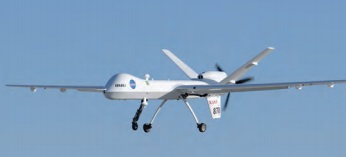Chapter: Fiber Optic Sensing, new invention technology, Research project papers,
Health Monitoring of Flight Structures

Health Monitoring of Flight Structures
This wide-ranging research effort is using FBG sensors and OFDR
sensing to develop quantitative techniques that can assess damage to structural
elements. Originally designed to measure strain on UAVs and aircraft, this
technology provides immediate feedback on strained aircraft structures to allow
for precise, controlled monitoring to help avoid adverse scenarios. Fiber optic
sensing with FBGs enables sensors to be placed in previously inaccessible
regions (e.g., within bolted joints), enabling more precise, higher resolution
measurements.
Work to date: Recent work involves mapping fiber optic
strain measurements into structural health monitoring matrices. A
UAV flight test validated strain predictions in numerous wingspan locations.
Additionally, the team designed a system with 24 fibers, 18 of which were
40-foot fibers (~17,200 gratings) that instrumented both the left and the right
UAV wings. Fibers also have been placed onboard the small APV-3 UAV and flown
with cFOSS. FOSS technology has been recently applied to a clamping band that
connects two satellite units in support of the Magnetospheric Multiscale (MMS)
Mission.
Looking ahead: The team is planning a
flight demonstration on an Antares launch vehicle in 2016. This
effort will provide structural information regarding the rocket motor thrust
frame as well as distributed temperature information along the fuel tanks.
NASA Partner: Kennedy Space Center
Benefits
Smaller and lighter: Offers 100 times the number measurements
at 1/100 the total sensor weight
Safer: Provides validated structural design data that
enable future launch systems to be lighter and more structurally efficient
Multiple modalities: Measures multiple
parameters in real time
Applications
Aeronautics Civil
structures
Space
Wind energy
Automotive Industrial
processes
Fiber Optic Sensing
Armstrong's portfolio of Fiber Optic Sensing System (FOSS)
technologies offers unparalleled options for high-resolution sensing in
applications that require a unique combination of high-powered processing and
lightweight, flexible, and robust sensors. The system measures real-time
strain, which can be used to determine two-dimensional and three-dimensional
shape, temperature, liquid level, pressure, and loads, alone or in combination.
Initially developed to monitor aircraft structures in flight, the system's
capabilities open up myriad new applications for fiber optics-not just in
aerospace but also for civil structures, transportation, oil and gas, medical,
and many more industries.
The Armstrong approach employs fiber Bragg grating (FBG)
sensors, optical frequency domain reflectometry (OFDR) sensing, and
ultra-efficient algo-rithms (100 samples/second). Engineers are continually
seeking new ways of looking at information and determining what is important.
Armstrong's FOSS technologies focus on critical research needs. Whether it is
used to determine shape, stress, temperature, pressure, strength, operational
load, or liquid level, this technology offers ultra-fast, reliable measurements.
Related Topics